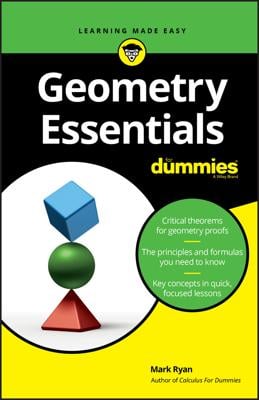With all rotations, there's a single fixed point—called the center of rotation—around which everything else rotates. This point can be inside the figure, in which case the figure stays where it is and just spins. Or the point can be outside the figure, in which case the figure moves along a circular arc (like an orbit) around the center of rotation. The amount of turning is called the rotation angle.
You can achieve a rotation with two reflections. The way this works is a bit tricky to explain (and the mumbo-jumbo in the following theorem might not help much), so check out the figure to get a better handle on this idea.
A rotation equals two reflections: A rotation is equivalent to two reflections over lines that
- Pass through the center of rotation
- Form an angle half the measure of the rotation angle







